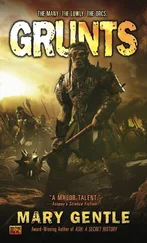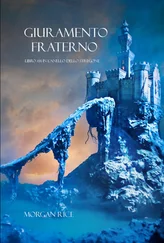FRANK GOLDEN was an authority on the things that happen to a human body immersed for any length of time in cold seawater. Golden—a physician who, by his own description, “swam like a stone”—researched the topic for the Royal Navy Air Medical School during the late 1960s and early 1970s. The text headings in Golden’s classic Essentials of Sea Survival provide a menu of horrors awaiting service members or anyone else forced to abandon ship or ditch a plane over water: Cold-Shock Response, Breath-Hold Time Reduction, Swim Failure, Drowning, Secondary Drowning, Saltwater Ulcers, Hydrocution, Trapped Under Ice, Severe Hypothermia, Oil Contamination, Immersion Foot, Turtle Blood, [53] This one is not so bad, provided you know what you’re doing. Norwegian shipwreck survivor Kaare Karstaad, whom Harold Coolidge interviewed while working on an ocean survival booklet during World War II, knew what he was doing. He’d catch the turtles at night, when their blood was “cold and refreshing.” “Drink it right away,” he counseled, “before coagulation takes place.” Don’t shy away from body cavity fluid! A fifty-pound turtle yields “about 2 cups of ‘consommé’ which… is delicious and not extremely fishy.” Sharks, by the way, were “not particularly vicious.” (Or delicious.)
Sunburn, Wave Splash, Osmotic Diarrhea, Rescue Collapse, Rewarming Collapse. There is no heading for Shark Attack. Sharks don’t even make the index.
To a sailor whose sunken craft is a submarine, all of this, the myriad dangers and discomforts of the ocean’s surface, are a distant fond dream.
12. THAT SINKING FEELING
When Things Go Wrong Under the Sea

THERE’S A SOUND THAT water makes, under pressure, when it pushes through a hole too small for its urgency. I know it mainly as a sprinkler sound, a pleasant lawns-in-summer sort of sound. Phhhhhhhh …. To a sailor on a submarine, where there are no lawns and no summer, it’s not pleasant, this sound. It’s the sound of water coming in where it mustn’t. A leaking flange, a ruptured pipe. The ocean with its foot in the door. The deeper you are, the harder it pushes. Three hundred feet down, seawater slams through a two-inch hole with enough force to bend a knee the way knees don’t bend. At a thousand feet, an eight-inch hole lets an Olympic swimming pool on board every three minutes. If it’s not fixed fast, you’re in trouble. You’re sunk.
I’m looking down into a submarine engine room that’s putting out a lot of that sound. Eleven wet necks are bent over leaks—first three, now four. We are 200 feet above sea level, inside a building in Groton, Connecticut, so the risk of drowning is minimal. The room is a mock-up, part of the Naval Submarine School’s Damage Control Trainer, a.k.a. the Wet Trainer, a.k.a. “one of the reasons sailors swear.” I’m on the dry side of a large and very clear (it has wipers!) window that looks in on the engine room and the cursing sailors.
With me at the window is the instructor in charge today, Chief Machinist’s Mate Alan Hough. Every few minutes he gives directions over his shoulder to a colleague at a console manning the leaks, but his main focus is the students. He’s both grading them and giving them feedback. The latter he conveys via signs that he holds up to the window, because no one can hear him through the glass and over the phhhhhhh. TWO PERSONNEL PER LEAK. WORK BEHIND THE PATCH. NO STRAPPING IN THE WATER STREAM. The signs are rigid red plastic, custom-printed by someone who must have wondered.
Today’s subs run on modern technology, but when something goes wrong, the tools sailors turn to may date back to the days of wooden sailing ships. One of the sailors we’re watching uses a simple marlin. Beginning an inch below the hole, he winds a length of thin rope tightly around the pipe, choking the leak one wrap-around at a time. The “pine plug” is just a wood cone, an object more commonly seen in building block sets or geometry classrooms. The tip of the cone is hammered into the hole as far as it will go. As the pine absorbs water, which pine does more greedily than most woods, the cone expands, becoming a snugger fit and a more effective plug.
“Horn,” Hough says over his shoulder. The man at the console blasts an air horn to make the students look up from what they’re doing. Hough grabs a sign (TWO HANDS ON HAMMER) and points at the young man whose hammer and plug the water stream has batted away like a kitten with a yarn ball, or Godzilla with a kitten. This happens nine out of ten times, Hough says; they lose the plug, the hammer, or both. It wastes time when there isn’t any to be wasted. And is dangerous. Ninety pounds per square inch (psi) turns a geometry class learning aid into a “pointed missile hazard.” The sailor retrieves the cone, which is bobbing on the water a few feet behind him. “One good thing about pine,” says Hough. “It does float.”
A hammer does not. “That’s why we tell ’em: hammer of opportunity.” If you lose the hammer, grab what’s at hand. This goes equally for plugs. When al-Qaeda blew a 40-by-60 foot hole in the hull of the USS Cole , the crew stuffed it with anything they could find. “Mattresses, wood, mooring line, sneakers…,” Hough says soberly. “Wrapped it up and shoved it in the hole.” It took three days, but they got the flooding under control.
I had met Hough earlier in his office, which he shares with two other men. A jar of Smucker’s Goober Grape stood out for the stripey, colorful whimsy it brought to the ill green-beige that someone, at some point, decided to paint the US military. Hough is rangy and pale-complected. He has an appealing overbite that, as he speaks, causes his incisors to touch down on his lower lip like children jumping on a bed. He was raised in a region of the country where people use “them” as an indicator rather than “those.” But Hough is nobody’s goober. He can take apart a steam turbine faster than most people can put a name to it.
Everything else in today’s leak-stopping arsenal is classed as a patch. The term is apt, but misleadingly unintimidating. This isn’t like patching a pair of pants. It’s like patching a riot hose while the water’s still on. You can’t come down on the rupture from above. The patch has to be slid over it from the side, like a blanket over a trash-can fire, and then cinched tight.
Hough watches a pair of sailors fail to secure a medium-sized patch called a strongback. The strapping they’re using is designed to hold up to water pressure as high as 6,000 psi. “So, for water at 90 psi to be leaking out, that’s a very bad job they’ve done.” The red plastic sign Hough would like to hold up does not exist: UNFUCK YOURSELVES.
Hough is tough on his students because the Wet Trainer is a kiddie pool compared to the reality it represents. Here was the situation on the USS Squalus , 50 feet down, after a 31-inch air-induction valve failed to close on a test dive in 1939. “The sea had found its way into the maze of pipes that ran the length of the Squalus . In the control room, jets of salt water sprayed from a dozen different places.” I’m quoting Peter Maas’s account of the sinking in The Terrible Hours . “The men worked frantically… seizing hold of whatever they could to stay upright.” And then the lights went out.
And this is from the submarine patrol report of the final patrol of the USS Tang , October 24, 1944, the day one of her own torpedoes broached the sea’s surface, curved sharply left, and blew a hole in her stern: “The Tang sank by the stern much as you would drop a pendulum suspended in a horizontal position.” A Lieutenant Lawrence Savadkin described the scene: “With the sudden downward angle of the boat, men and loose gear were bumping and falling by me with the rush of water.” The sub school Wet Trainer doesn’t tilt, but the one at the Officer Training Command in Rhode Island, nicknamed the USS Buttercup , does. (Apparently quite dramatically. “You never save the Buttercup ,” Hough says.) With the understated monotone that comes of hindsight and report-writing, Savadkin concluded, “Confusion was great at this time.”
Читать дальше













